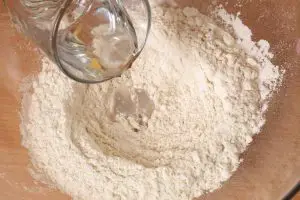"This site contains affiliate links to products. We may receive a commission for purchases made through these links."
When baking your bread imagine spending a good amount of your time waiting for the perfect bread, only to see your work bear no fruit. Disappointing, isn’t it?
Bread Baking Troubleshooting
Usually, even the best of the best guides do not let you on the mishaps that can happen during the baking process. Sometimes it’s a machine error, while others its human fault. Regardless of the problems, we have listed some of the troubleshooting tips below for our friendly-bakers:
The Dough Did Not Rise or Took its Time
- Yeast might not have been used enough
- The liquid being too hot can destroy yeast
- The liquid being too cold can slow down yeast
- Extensive use of salt can inhibit yeast activity
- Excessive use of sugar can affect yeast activity. Remember if ½ cup sugar is used against 4 cups of flour, then 2 tsp of yeast is needed.
- Ideal rising temperature is usually between 83-94 degree Fahrenheit. Anything high or below this would hinder the process.
The Bread Rose but then Fell Flat
- You should use bread flour when baking with yeast.
- The dough could have over-risen
- Preheat your oven before baking as low temperatures cause their fall.
Large Pores
- If air isn’t removed during the kneading process, the dough is poorly moulded.
- Do not allow the dough to rise for too long.
Crusty and Dense-sy
- If the oven temperature is too low, the bread can face such issue.
- Depending on the type of flour, the amount also matters. Check the quantity needed to bake before starting the process.
- Keep the dough moist during the rising step; else it will become dry.






